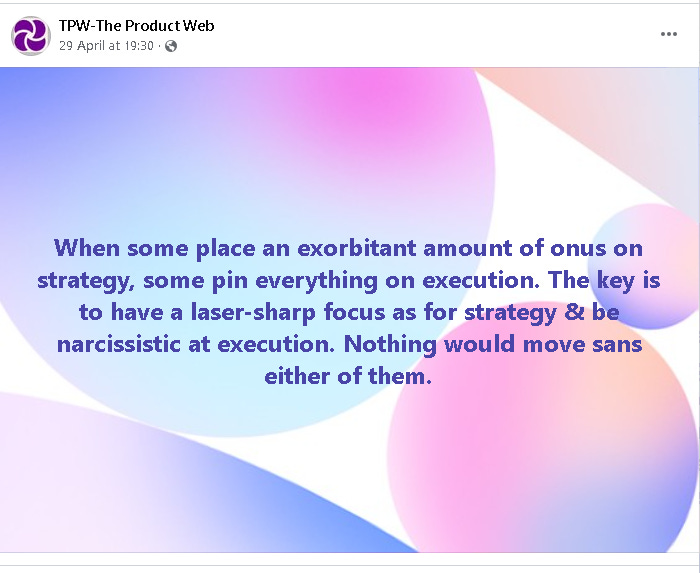Das WIRTSCHAFTSWUNDER!
Here are a few important management / leadership lessons [das Wirtschaftswunder] can teach us…
[Das Wirtschaftswunder] as you may have already guessed is a German phrase when broken into its parts becomes:
[“Wirt schaft”] translates to “business” / “economic”
[“Wunder”] translates to “marvel / wonder”
The economic marvel that’s been referred to is the transformation of present day Deutschland (Germany) post the culmination of the world war. How it went from the shambles of largely being a war-torn area to the leading economies in the whole of the European continent is quite a gripping story.
Wars were bad back then & are totally bad, in fact worse today. With financial inclusion being rampant across the globe making it feasible for anyone sitting in a country in some corner of the world to invest across asset classes in another country that’s miles away geographically making the world sort of more connected economically would so obviously bear adverse effects financially in case of a turmoil. Indexes & stock prices would see some wild swings. Trillions could get wiped out at market open, given a gap-down opening leaving one with no time to react & nobody can really do anything about it. Yes, stop losses for the win as for all the individuals. But that could again trigger a few fresh market actions, a few fresh short positions given the changes in support & resistance levels taking the index & asset prices furthermore lower.
Any major economic miracle that was pulled off or being attempted today needs a few pillars of strength sans which nothing would move. The one thing that comes across significantly as one looks back to analyze these events that moved (/ shaped) the world is overall blind-shot alignment over the goal.
[Das Wirtschaftswunder] was made possible by a few important pillars & here’s a brief about what they were:
1. Currency Reforms
Back in 1948 when the Russians withdrew from the alliance, Germany along with its counterparts Britain & France established a complete reformation of their currency, owing to which they substituted Deutsche Marks (DM) the new currency in force now after eliminating the Reich Marks that were circulated earlier.
Such a major economic activity could have many repercussions beyond the scope of this article, the one thing that deserves a special mention is how the new currency gives more control to the central bank, helping determine the value they ought to peg it at as opposed to the other currencies in the market. Seminal yes, which is why it demands the right people be at the right place.
2. Price Control
During times of turmoil, the prices of commodities across the board right from essential to luxurious ones would shoot through the roof given the reliance (/ over-reliance at times) on imports as the demand could be right up there & supplies taking an adverse hit.
The need for the central bank to intervene with sustained price stability maintaining the prices of all essential commodities at affordable rates is more or less the backbone of the reforms as it ensured continual supply of goods across the country & for as long as they don’t reach a state of stability.
3. Market Growth
Tough times when one’s got their backs to the wall require rebuilding across all contingents. The fiscal policies being friendly to aid the continuous development was primary. But alongside that one also needed to concentrate on rebuilding the infrastructure, the wherewithal to establish & run businesses, the need for a regime in taxation.
The establishment of the labor markets with an acute focus on training people on those skills needed for development so as to firstly adapt & then build a skilled workforce to support sustained economic growth can’t be discounted here at all. That led to tremendous focus on innovation leading to the uprising of private sector orgs. whose focus was profitability, optimizing produce targeting growth & the contribution to the (GDP) larger economy. That wave of growth led to the initiation of many a strategic partnership with sources / orgs. outside of Germany, the onboarding to the EEC (European Economic Community) which led to shaping the country as for international trade.

“Great leaders given their farsighted vision are often able to break-down & translate that into granular details so as to make it easily perceivable to everyone involved, thus spelling out the quantum of accountability & ownership that is required”
When there are tons of lessons such economic event would impart across the hierarchy & across various contingents, we’d stick to leadership & innovation as for this write-up.
Lets’ dive in:
1.0 Vision
It all starts off with a solid vision. A vision for the immediate future & the distant future as well. One may even go as far as much as terming them BHAGs. When a vision into the immediate future addressing the need for a direction in near-term is important alright, it is also equally important to factor in the long-term perspective, setting enough pointers towards enforcing direction & help everyone align over it.
In this case the vision could be:
Make Germany the leading economy in EU
Good definition of the vision would also follow up with these things (specifically in that order):
1.1 Articulation / Objective
Clarity over the vision ought to lead to establishing a clear Objective. An objective defines the whole purpose & stitches everyone involved around it by giving them a undivided / unanimous sight of the end goal.
As for our example it could be something like:
Reconstruct & develop German economy so as to restore order
1.2 Strategy
When the previous sections thus far concentrated on the “WHERE YOU WANT TO BE” it serves as the direction. But, it doesn’t address the “WHAT / HOW IS IT TO BE DONE” behind it. That’s where the strategy ought to take center-stage.
And that could be done by:
Focus firstly on reforms to maintain a state of stability & then build an economy that thrives on industrial growth / output opening it up to the entire world
1.3 OKRs
Spelling out the strategy clearly ought to instill a lot of confidence & help teams align over it. But it also ought to give one more than enough freedom to break it down into manageable chunks so as to be able to individually set the objectives as a factor of the outcomes & then define the parameters that help induce tangibility, making progress more trackable.
Although super-complex as for our example of [das Wirtschaftswunder], some portion of it could end up looking like:
Objective 1: Stabilize the Economy
Key Result 1: Gain a significant impetus vis-à-vis the currencies of the world by revamping the currency
Key Result 2: Keep prices at manageable lows so as to foster growth in the long-term
Objective 2: Boost Industrial Growth
Key Result: Boost home production by promoting & establishing industries that can spearhead world-class innovation
Key Result: Increase overall citizen satisfaction by promoting social welfare
Key Result: Improve exports significantly by building necessary partnerships world over
2.0 Stakeholders
Spelling out a strategy / defining the OKRs is surely a milestone alright, but still it could account to nothing because it is all still on paper. It may not be altogether wrong to call it a super-fancy plan as one is yet to take a single step towards execution & there’s nothing tangible achieved as yet. So, it ought to start off with defining the stakeholders.
2.1 Stake & Ownership
Who are the people who would help put this masterplan into action? Who would be the ones who can shoulder that responsibility & what expertise would they be required to have? Talking of a long-term nobody has ever managed to achieve anything great by moving alone. One needs a team of people with the expertise & that’s a given.
As for our case in question here:
Earmark & enlist all the leaders who represent the respective domains that are linked directly to our economic growth & can help boost it
2.2 Milestone
Once the stakeholders / leaders have been earmarked & the awareness of the vision, strategy has been handed over, it is important to feed them with the OKRs so that they align w.r.t the objectives & totally digest the key results that matter towards reaching the outcomes.
Although super-detailed & highly complex, one such milestone as for as this case here could be:
Ensure overall citizen satisfaction improves @ ~5-7% at a bare minimum QoQ
3.0 Roadmap
Putting plans into action & execution is certainly where most people would falter & one can’t afford to take any chance. If one is targeting those objectives, it becomes imperative to spell out every minute detail as to how one is going to get to those outcomes. One can’t do / expect everything to be done all at once & that isn’t the way it should be done either. When some of them initiatives planned could feel fluid given that they aren’t prime at that moment, the respective stakeholders ought to make sure that they demand & obtain all the clarity needed to proceed as they make progress over their current area of focus.
As for our example here targeted at citizen satisfaction, here’s what a roadmap could look like:
Ensure unemployment numbers drop by enforcing industries to employ a significant workforce
Analyze the gaps & build suitable training programs towards improving fitment / employability
Create ample amenities, beefing up infrastructure as need be
Build awareness amongst citizens about the strategy & where we’re headed
Enforce a culture of collecting feedback, analyze, segregate & factor it all in
Create a citizen friendly atmosphere where anyone interested can chip in with valuable feedback
4.0 Tracking
Progress could be defined differently at the leadership level & that could end up making a lot of difference in how growth gets perceived. One could call 3% satisfactory growth at one place, but the same number may not even serve as enough to lift off the ground as for some other cases. It is important to drive teams forward & ensure that they are self-sustained as for swallowing & taking the growth bandwagon ahead.
One way to achieve that is:
creating a reporting channel & tracking progress at a regular cadence
ensuring roadblocks are reported early & thoroughly discussed
gauging the magnitude of impact & composing workarounds, if not solutions
pinning on the outputs strictly & not settling for anything less
A lesson for the ages:
A historic event like [das Wirtschaftswunder] clearly underlines the importance of an unilateral vision & possessing a fine-eye for detail to strategically break it down to smaller chunks across each of the stakeholders involved. But pulling off something of that magnitude also emphasizes the importance of maintaining a laser-sharp focus on strategy on one hand whilst being narcissistic about execution on the other.






